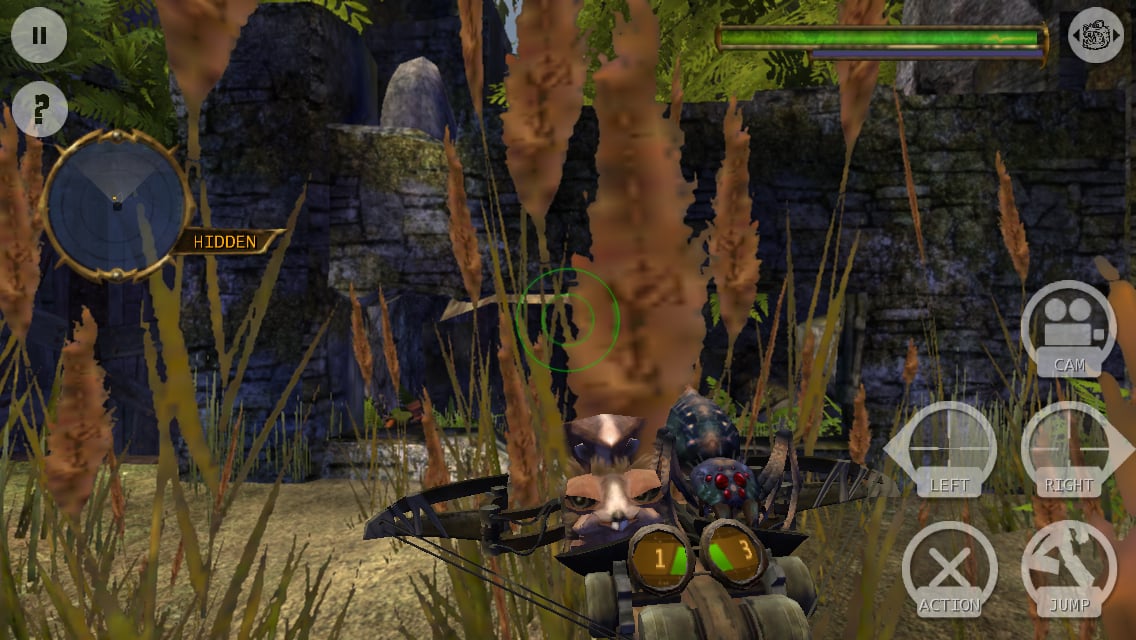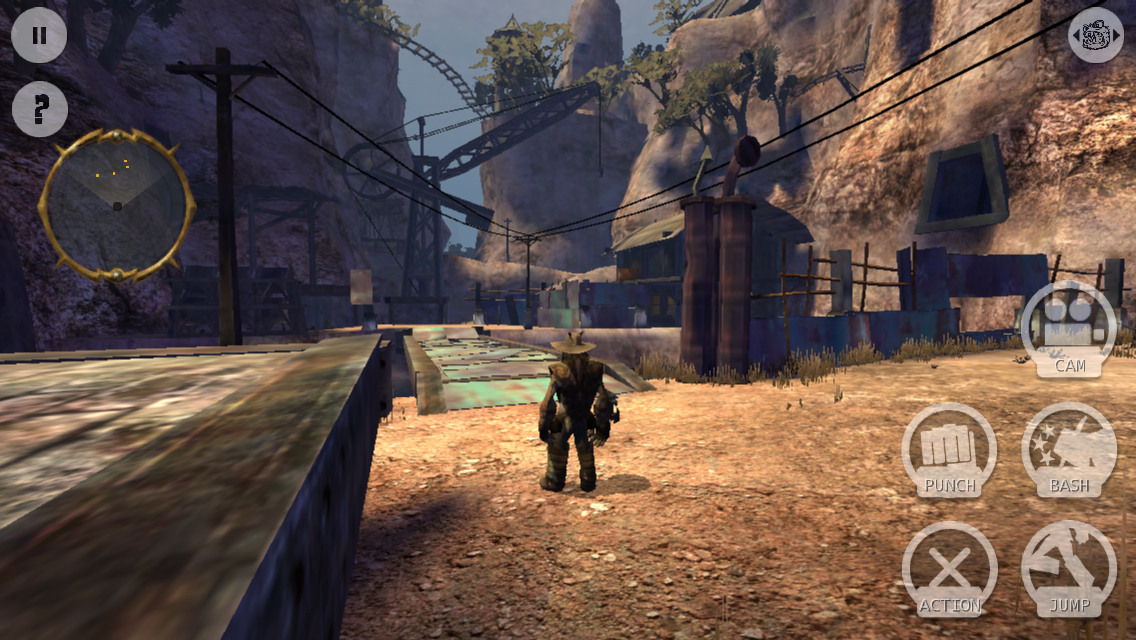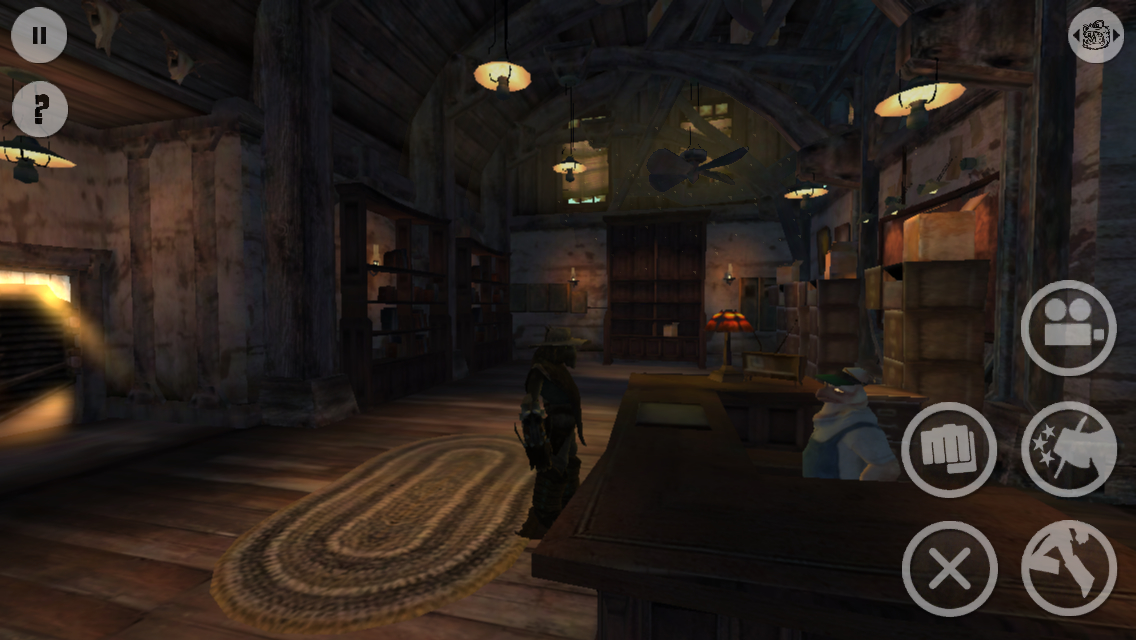 The story of the Oddworld Inhabitants themselves is almost as interesting as that of any of their games. Founded by Hollywood veterans to take advantage of the correctly-predicted boom that 3D graphics would bring, the company had a clear, ambitious plan for a series of five games that took place in their Oddworld universe. A new team planning for that many games before they’ve even finished one is the game development equivalent of a rookie stepping up to the plate and pointing at the stands, but when Oddworld: Abe’s Oddysee released, it seemed like the Oddworld Inhabitants weren’t bluffing. The game was a massive hit, and the lead character Abe become something of a cult icon in the 32-bit era. It was followed by an initially unplanned direct sequel, Abe’s Exoddus, which was meant to help fill the gap while everyone waited for the next chapter of the quintology.
The story of the Oddworld Inhabitants themselves is almost as interesting as that of any of their games. Founded by Hollywood veterans to take advantage of the correctly-predicted boom that 3D graphics would bring, the company had a clear, ambitious plan for a series of five games that took place in their Oddworld universe. A new team planning for that many games before they’ve even finished one is the game development equivalent of a rookie stepping up to the plate and pointing at the stands, but when Oddworld: Abe’s Oddysee released, it seemed like the Oddworld Inhabitants weren’t bluffing. The game was a massive hit, and the lead character Abe become something of a cult icon in the 32-bit era. It was followed by an initially unplanned direct sequel, Abe’s Exoddus, which was meant to help fill the gap while everyone waited for the next chapter of the quintology.
The Abe games were 2D puzzle platformers in the vein of games like Another World or Prince of Persia. They had gorgeous graphics, but they were almost entirely pre-rendered, and the gameplay was, at best, 2.5D. The big step to 3D would happen with Oddworld: Munch’s Oddysee, which ended up at least as famous for being a major Xbox-exclusive launch title as it did for any of its inherent qualities. It seemed like the Oddworld Inhabitants were having a bit of trouble getting the swing of a fully 3D game, and as a result, Munch’s Oddysee was perhaps not the game fans were hoping for, and is considered the series lowpoint by many. Microsoft’s lofty expectations for the series were too high for little Munch to live up to, and a seeming pivot in strategy for the company had Oddworld changing publishers again, this time to Electronic Arts. Hey, where’s that grim organ music coming from all of a sudden?

At this point, I’m going to step aside from the history lesson to inject some personal feelings into all of this. I don’t like Abe’s Oddysee. There, I said it. I love Abe as a character, and I think the game has a beautiful and unique presentation, but I don’t think it’s terribly well-designed. The Oddworld Inhabitants were new to the craft and while the game was an amazing effort in that context, the lack of experience showed. I’ll talk more about this should the game ever come to iOS, but I want to set that down immediately. Abe’s Exoddus was better in some ways, worse in others, and Munch’s Oddysee, while irresistibly charming, is the sort of decent-yet-forgettable 3D platfomer effort that flooded the early-to-mid period of the sixth-generation consoles. The entire series up to and including Munch unquestionably had a big fanbase, but I genuinely believe Oddworld got by on its personality more than anything else.
I’m not saying this stuff to be mean, but rather because the reception to Munch clearly led to a bit of soul-searching for the developer. I infer that because Oddworld: Stranger’s Wrath ($2.99) is an incredible game in all respects. It’s an exceptionally well-designed game from top to bottom, and it manages that while offering up some innovative mechanics and the usual top-shelf Oddworld production values. This is without question the developer’s best game, and it reflects the sort of maturity and experience that are perhaps most quickly taught by harsh lessons. Naturally, it was the studio’s biggest commercial failure because these things happen sometimes and, seriously, where is that scary organ music coming from? I can take a guess at the feeling of the studio as their most critically-acclaimed title went on to underperform in the market, because soon after, the Oddworld Inhabitants announced they were exiting the video game business. With that, one of the quirkiest underdogs of the PlayStation generation walked off into the sunset.

A funny thing happened in the video game industry in the near-decade that has passed since then. What was becoming an increasingly unsustainable business based on risk-averse and all-too-often exploitative publishing arrangements broke open, just a little, with the wide acceptance of digital distribution. It became once again possible for developers to get their games out to a massive audience without having to fork over their IP or gamble insane budgets to compete in the AAA space. This new model has its own share of problems, but for a studio like the Oddworld Inhabitants, it’s just what they needed to get back into the game. They hooked up with developer Just Add Water, and players on other platforms have been enjoying the fruits of that union for a few years now. Well, it’s time for iOS gamers to get their turn, because a certain Stranger just rolled into town, courtesy of mobile developer Square One Games.
Oddworld: Stranger’s Wrath is at once very familiar and quite unconventional. You play as the titular Stranger, a bounty hunter making his way in a Spaghetti Western-like region of the Oddworld. The game itself is a mix of third-person platforming and first-person shooting where you tap a button to flick between the two viewpoints as needed. It’s a bit tricky to get used to at first, but you’ll soon get the hang of things, and the game rarely demands precision in the infrequent cases where you have to change views quickly. In keeping with Oddworld‘s somewhat family-friendly theme, Stranger doesn’t use a gun with bullets to hunt his bounties. Instead, he uses a wrist-mounted bowgun that fires live creatures as ammunition. While some of these creatures work for dealing direct damage, they all have special uses that effective hunters will take advantage of to trap enemies, taking them in alive. You earn more moolah that way, you see, and moolah is what Stranger is after. He needs a whole pile of it to pay a doctor for a special surgery. Of course, in Oddworld tradition, you’re eventually going to run afoul of an evil rich guy, whose plans end up intertwined with Stranger’s life in some surprising ways.

The story is quite interesting and the presentation is stunning, as you would expect from a game that was originally a full retail title on Xbox. It’s a bit hammy at times, but the heart of it feels very sincere. I love the Western theme, as not nearly enough games use that kind of setting for my liking. Stranger is channeling Clint Eastwood’s Man With No Name, to be sure, but that’s actually a pretty cool character type to build an action game around. Stranger’s Wrath has its moments of levity, though most of the humor is of the dark or sadistic type, but it’s surprising just how serious it can get at times. The Oddworld Inhabitants aren’t the only developer to work a good story into a platformer, but it’s rare enough in the genre that it feels like an unexpected treat. Also unexpected and deeply appreciated is just how big the game is. The game took me somewhere around 15 hours to finish, and that was leaving a lot of optional content unfinished for the sake of getting this review out to you within a reasonable span of time. There’s really very little like it on iOS.
But maybe you know all that. Maybe you know Stranger’s Wrath is a great game, and you’re wondering about how great this particular version of the game is. The short answer is that it’s pretty well-done. There’s no perfect way to map ten buttons, two sticks, and a directional pad onto touch screen controls, but they’ve made a really good go of it here. As far as the technical end of things goes, the developer actually puts a lot of the power in your hands. The game’s options include a bunch of sliders you can adjust to reduce visual quality in exchange for better performance. At the lowest settings, it runs very smoothly, and still looks alright. At maximum settings, even the hardiest device will have framerate issues in some parts of the game. It’s a nice way to future-proof this port, though, and I wish more games included those kinds of options.

Now, for the slightly longer version. The original Stranger’s Wrath didn’t use every button on the Xbox’s controller, but it did use almost all of them. The developers of this port have made use of the gyro sensor in iOS hardware to compensate for some of that, and if you’re comfortable with using motion controls, you’ll have a slightly easier time of things. Even with that, however, you’ve got to contend with a floating virtual stick for movement and an assortment of virtual buttons to use Stranger’s various moves. If you don’t want to use the gyro sensor for aiming, you can turn it off in the menu, but then you have to aim using a floating stick on the right side of the screen, too. You also have to shake the device to use Stranger’s health-restoring shake move, no matter what. You can arrange the buttons as you like and even change their size, so the developer’s given you lots of options to try to make the controls work for you. It’s quite appreciated.
Surprisingly, the controls are mostly up to the task, as long as you’re not the sort of person who can’t get on with virtual buttons at all. There are a few sections that are a bit more frustrating in this version as a result of sometimes needing to take your eyes off the action to glance at the buttons, but Stranger’s Wrath‘s general stop-and-go pace actually lends itself well to that limitation. Of course, if you have an MFi controller, none of this is a problem, as you can just play using that and get the original experience. I tested that functionality for the purposes of the review, and it’s just like playing the console or Vita versions. Other than that brief bit of testing, I played the game entirely with touch controls, and I didn’t have any serious issues with getting through the main game.

Graphically, the game feels like a mix between the original Xbox version and the newer HD versions. It’s not quite the all-around performer that the Vita version is, but the iOS version still looks really good at the maximum settings, if you’re willing to sacrifice framerate. If you’re not willing to do that, you fortunately don’t have to. By fiddling around with the different graphics sliders, you can find a nice balance between detail and smoothness that fits your own personal tastes. It actually runs impressively well, keeping in mind how complex and open some of the environments are. I really like that the developer has put some of the power in the player’s hands here, since everyone has a different tolerance level for framerates. The audio, although sounding somewhat compressed compared to the console version, still comes off really well. The game also has a full list of achievements and a bunch of leaderboards through Game Center.
Oddworld: Stranger’s Wrath is one of those wonderful little gems that too many people missed when it first came out. It was an amazing game then as a full-priced retail console game, and it’s every bit as awesome now on a mobile device. The price feels like a steal for a game of such substance. The only real thing I can say against it is that if you can’t deal with virtual controls and don’t have an MFi controller, you might run into trouble here the same way you would with any game with virtual buttons. Other than that, this is a huge, beautiful, unique game with excellent gameplay design. There’s truly almost no competition in its category on iOS. Now, go on and bag your bounty, Stranger.